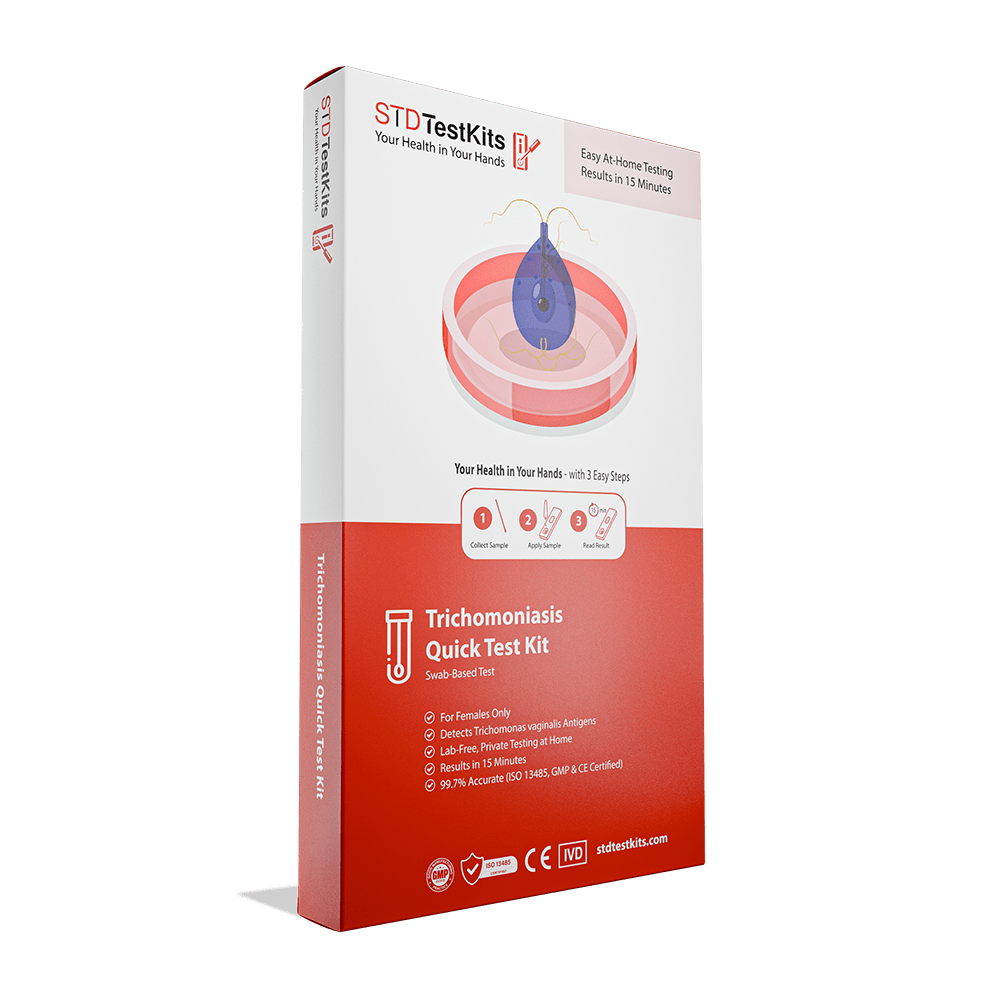Can You Trust a Hepatitis B Home Test? Here’s the Truth
Quick Answer: The best time to test for trichomoniasis is around 7 to 14 days after exposure. Testing too early may result in a false negative, so retesting at 3 to 4 weeks is often recommended, especially if symptoms start or you're high risk.
Why This Matters Even If You Feel Fine
You don’t have to be itchy, burning, or dripping to have an STD. Trichomoniasis is notorious for staying silent, especially in people with penises. Around 70% of infections cause zero noticeable symptoms at first. But that doesn’t mean it’s harmless.
Consider Sam, 32, who had what they thought was a low-risk encounter. No symptoms, no worries. But weeks later, their partner developed unusual discharge and tested positive for trichomoniasis. Sam tested negative initially, but later learned that early testing can miss infections.
This isn’t rare. Most trich cases go undiagnosed precisely because people assume they’d feel something. The truth? You can carry and transmit trich without knowing. And while it’s curable, untreated trich can increase your risk for HIV and cause pregnancy complications.
So yes, it matters. Even if your body feels “normal.” Even if it was a one-time thing.
What Happens After Exposure: Incubation vs Detection
After exposure, trichomoniasis starts multiplying in the genital tract, usually within a few days. But just because it's replicating doesn't mean it's detectable yet. The immune system, testing method, and infection site all influence when a test will turn positive.
This is where many people get confused: Incubation is when the infection grows. The window period is how long it takes before testing can reliably detect it. You might be infected and contagious before a test catches it.
Figure 1. Timing breakdown for incubation and test detectability. Testing during the window period may result in false negatives.
This matters because trich can quietly move through multiple partners in that detection lag. Testing too soon gives a false sense of safety, until symptoms emerge or a partner calls you out of the blue.

People are also reading: Florida’s HIV Crisis by the Numbers: Who’s Most at Risk and Why It’s Rising
The Hookup Timeline: How Soon Is Too Soon to Test?
If you're reading this right after a risky night, here's what you need to know: testing within the first 72 hours is often too early to detect trichomoniasis. Even the best tests need time to catch the infection. That doesn't mean you're powerless, it means you need a plan.
Here’s how it often plays out. Jamie, 24, got tested just four days after an unprotected oral-genital encounter. Their rapid antigen test came back negative, and they moved on. But by day 12, they noticed a funky discharge and itch that wasn’t there before. A retest showed a clear positive.
That first test wasn’t wrong, it was just too early. The parasite hadn't reached detectable levels. Timing was the missing piece, not the test quality.
If it's been less than 7 days since exposure, testing now might still be useful, but expect to repeat the test. If it’s been more than two weeks, you’re in a better accuracy window. And if symptoms start at any point, don’t wait, test again immediately.
Which Test Should You Trust? Rapid vs Lab vs Mail-In Kits
There’s no universal “best” test. It depends on your symptoms, access, privacy needs, and timing. Most trichomoniasis tests fall into three categories: rapid antigen tests, nucleic acid amplification tests (NAATs), and mail-in lab kits. Each has pros and tradeoffs.
Let's look at it from a real-world point of view. Dani, who is 29, lives in a rural area where there isn't a sexual health clinic nearby. They use a quick test at home to get answers quickly. Chris, who is 37 years old, wants lab-grade accuracy and sends a vaginal swab to a certified lab. It depends on what you need, but both are valid.
Figure 2. Comparison of trichomoniasis test types based on real user needs.
If your head keeps spinning, peace of mind is one test away. Order a discreet trichomoniasis rapid test kit, or choose a combo if you're unsure what to test for.
False Negatives Happen, Here's Why Timing and Technique Matter
Getting tested early feels responsible, and it is. But it’s not always conclusive. One of the most common mistakes with trichomoniasis is interpreting a single negative result as a final answer, especially if it was taken within the first week after exposure.
Take Kayla, 26. She tested negative with a rapid antigen kit five days after an unprotected hookup. Relieved, she moved on, until a month later, a routine screening at her OB/GYN came back positive. She had no symptoms the entire time. The problem? Her first test was just too early.
False negatives aren’t always about faulty tests. They happen because the parasite needs time to grow in detectable numbers. They also happen when swabs miss the infected area, especially in men who are more likely to carry trich in the urethra without symptoms. Even labs can miss it if the sample is weak or taken incorrectly.
To reduce your chances of a false negative:
Figure 3. Common causes of false negatives with trichomoniasis tests, and how to avoid them.
If your gut says something’s off, trust it. A second test could be the difference between knowing and unknowingly passing it on.
Should You Retest? Here’s What Experts Recommend
Even with a negative result, you might not be done. The CDC recommends retesting anyone who’s had a potential exposure if symptoms appear, if their first test was early, or if their partner tests positive later. And if you’ve been treated for trichomoniasis, retesting after treatment is strongly advised within 3 months, because reinfection is common.
Here’s a story we hear often. Malik, 31, got treated after testing positive for trich. He told his partner, who got tested and came back negative. They resumed sex without condoms. But neither of them knew that she’d tested too early. She tested again three weeks later, positive. They both had to restart treatment.
This happens more than people think. One partner tests early, assumes it’s over, and reinfects the other. That’s why timing isn’t just about you, it’s about anyone else you're sexually connected to.
If you’ve tested within the first 10 days of exposure and got a negative, schedule a follow-up at the 3 to 4-week mark, even if you're symptom-free. If you’ve been treated, plan for a retest around 90 days. It’s not paranoia. It’s protocol.
Still unsure? Return to STD Rapid Test Kits to explore combination kits or talk to a telehealth provider about when to retest based on your exposure timeline.

People are also reading: My Partner Has HPV. Am I at Risk, And What Should I Do Next
“But I Feel Fine”: Why Asymptomatic Trich Is Still Serious
Let’s get something straight, feeling fine doesn’t mean you’re clear. Over 70% of people with trichomoniasis show no symptoms when first infected. That number skews even higher in men. But asymptomatic doesn’t mean harmless.
Trich increases the risk of contracting and spreading other STDs, especially HIV. It’s also linked to complications in pregnancy, including preterm delivery and low birth weight. That means you could feel totally normal and still pass on something that causes real harm to others.
This is where emotional intelligence meets science. Testing isn’t about guilt. It’s about care. Getting screened, even without symptoms, shows your partner(s) that you value their health as much as your own. And if you’re solo? It shows that you’re not letting shame or fear make your choices for you.
No discharge? No itch? Still test. Especially if the encounter felt off, or you’re second-guessing it days later.
Testing While Pregnant, Immunocompromised, or On Meds
Trich doesn’t care about your immune system, but it can hit harder when your body is already dealing with other things. If you're pregnant, HIV-positive, undergoing cancer treatment, or on immunosuppressants, talk to your provider about timing and test type. You may need a lab-based NAAT to be sure.
And yes, you can test safely during pregnancy. Trich is one of the few STDs with clear treatment protocols during all stages of pregnancy. But catching it early is key, because complications increase as the pregnancy progresses.
Medications don’t usually interfere with trich tests, but always read your test kit instructions or ask a pharmacist if you’re unsure. Hormonal changes, antibiotics, and douching can sometimes affect sample quality, so timing your test when you haven’t used any vaginal products for 24–48 hours can help.
Your situation might be unique. That doesn’t mean it’s unmanageable. There’s always a path forward, and you deserve clarity, not confusion.
Privacy, Shipping, and Discreet Testing Options
Let’s talk about the logistics, because for many people, the reason they delay testing isn’t confusion about symptoms. It’s fear of being judged, seen, or outed. And that’s valid.
If you're living in a shared house, a small town, or just don’t want your business on display, you’re not alone. That’s why discreet shipping and private test options exist. At-home testing lets you skip the awkward small talk and get answers on your own terms.
Packages from STD Rapid Test Kits are unmarked, compact, and shipped fast. You won’t see any logos screaming “STD” on the box. Results are yours and yours alone. You decide when and how to share them, if at all.
We’ve heard from people who test from remote cabins, long-haul truck stops, even while traveling abroad. Whether you’re managing exposure timelines or planning for a partner’s visit, there are options that don’t compromise your privacy or peace of mind.
You deserve to be informed without feeling exposed. This is your body, your call.
What to Do If Your Trich Test Comes Back Positive
Pause. Breathe. A positive test doesn’t mean you’re dirty, broken, or irresponsible. Trichomoniasis is one of the most common and treatable STDs in the world. Millions get it every year, and millions get treated and move on with their lives.
The first step is usually a prescription for metronidazole or tinidazole, taken as a single dose or short course. It’s fast, affordable, and effective. Most people clear the infection within a week.
But don’t stop there. Let your recent partners know, compassionately, clearly, and ideally without blame. They need to test and treat too. If that feels terrifying, scripts exist. Some clinics even offer anonymous partner notification services by text or email. The goal isn’t shame, it’s stopping the cycle.
Here's what it looked like for Ezra, 35: He saw a faint positive line on a rapid test, messaged his most recent partner with an honest heads-up, and offered to cover their test cost. They were grateful, not angry. The conversation was awkward, but it built trust. And both got treated in under a week.
You can’t change what happened. But you can change what happens next.
FAQs
1. Can I really have trichomoniasis and not know it?
Unfortunately, yes, most people with trich don’t feel a thing. It’s one of those infections that hides out, spreads easily, and quietly stirs up problems later. We’ve seen people go months before a routine screening finally caught it. So if you’re thinking, “But I feel fine,” don’t take that as a free pass.
2. How soon after sex can I get tested?
Ideally, wait at least 7 days after the hookup, but 10 to 14 days is even better if you want more accurate results. If you test earlier, don’t panic if it comes back negative. Just mark your calendar and plan a follow-up. Especially if you’re waking up every night thinking, “What if I missed something?”
3. What does trichomoniasis look or feel like?
For some, it’s unmistakable: weird-smelling discharge, burning when you pee, or a frothy greenish flow. Others? Total silence. Men often have no symptoms at all. So if your partner’s been diagnosed and you're symptom-free, that doesn’t mean you’re in the clear. Get tested anyway.
4. Is trich contagious when there are no symptoms?
100% yes. You can pass it on just by having genital contact, penetration isn’t even required. Think of it like glitter at a party: it spreads fast and sticks around. So even if you’re symptom-free, your partner might not be so lucky.
5. Can I test for trich at home without anyone knowing?
Yup. That’s the beauty of at-home kits. No judgmental waiting rooms, no awkward pharmacy counters. Just order, swab or pee, and read. The box shows up like any other boring delivery, and your results are for your eyes only.
6. I tested negative, but now something feels off, should I retest?
Absolutely. If you tested early or used a rapid kit during the first week, that result might not mean much yet. We've heard from readers who tested negative on day five, then felt weird on day twelve and tested positive. Trust your gut, and get that second test.
7. Will trich go away if I just ignore it?
Nope. Unlike a cold, trich doesn’t resolve on its own in most people. You might feel fine, but the infection can linger, mess with your body, and keep spreading. The good news? Treatment is super effective and quick, usually just one pill.
8. What if I’m pregnant or breastfeeding?
You can still get tested and treated. In fact, you should. Trich increases risks during pregnancy, like early labor and low birth weight. Doctors typically prescribe a single dose of metronidazole that’s considered safe, but talk to your provider for the full rundown.
9. My partner tested positive but I didn’t, what gives?
This happens more than you’d think. Maybe you tested too early, or the infection’s just not showing up yet. Sometimes, partners ping-pong it back and forth without realizing. If one of you has trich, both of you need treatment. Period.
10. How do I tell someone I might’ve given them trich?
With honesty and compassion. Try something like, “Hey, I just found out I had something called trich, most people don’t know they have it. You might want to get tested.” It’s awkward, yeah, but you’re helping them, not hurting them. Most folks would rather hear it from you than a clinic call weeks later.
You Deserve Answers, Not Assumptions
There’s no shame in not knowing. No shame in wondering if that one night changed everything. What matters is what you do now. Trichomoniasis is common, curable, and often silent, so don’t wait for symptoms to show up before you take action.
Whether it’s been two days or two weeks since your risky hookup, there’s a test that fits your timeline and your life. Don’t wait and wonder, get the clarity you deserve. This discreet at-home trichomoniasis test kit can help you get answers quickly, privately, and on your terms.
How We Sourced This Article: We combined current guidance from leading medical organizations with peer-reviewed research and lived-experience reporting to make this guide practical, compassionate, and accurate.
Sources
2. Detection of Trichomonas vaginalis via Self-Collected Swabs
3. Diagnostic Accuracy of PCR for Trichomonas vaginalis
4. Clinical and Laboratory Testing for Trichomonas vaginalis
About the Author
Dr. F. David, MD is a board-certified infectious disease specialist focused on STI prevention, diagnosis, and treatment. He blends clinical precision with a no-nonsense, sex-positive approach and is committed to expanding access for readers in both urban and off-grid settings.
Reviewed by: Lindsay Rowan, RN, MPH | Last medically reviewed: October 2025
This article is for informational purposes and does not replace medical advice.







